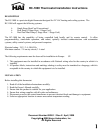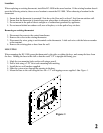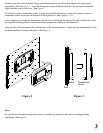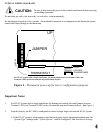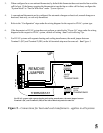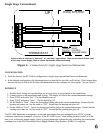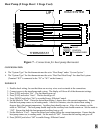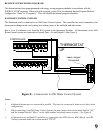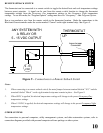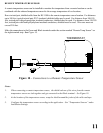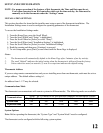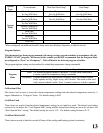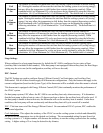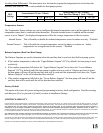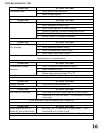
1
1
4
4
Cool
Minimum
On
The number of minutes the thermostat forces the cooling system to remain on before turning
off. Raising this number will increase the total time the cooling system is on (saving energy),
but may allow the temperature to drift farther from setpoint (decreasing comfort). When
combined with Cool Minimum Off, cycles per hours can be obtained by using the following
calculation: 60 / (Cool Minimum On + Cool Minimum Off). The default time is 6 minutes.
Cool
Minimum
Off
The number of minutes the thermostat forces the cooling system to remain off before starting
again. Raising this number will increase the total time that the cooling system is off (saving
energy), but may allow the temperature to drift farther from the setpoint (decreasing comfort).
When combined with Cool Minimum On, cycles per hours can be obtained by using the
following calculation: 60 / (Cool Minimum On + Cool Minimum Off). The default time is 6
minutes.
Heat
Minimum
On
The number of minutes the thermostat forces the heat to remain on before turning off.
Raising this number will increase the total time the heating system is on (saving energy), but
may allow the temperature to drift farther from the setpoint (decreasing comfort). When
combined with Heat Minimum Off, cycles per hours can be obtained by using the following
calculation: 60 / (Heat Minimum On + Heat Minimum off). The default time is 6 minutes.
Heat
Minimum
Off
The number of minutes the thermostat forces the heat to remain off before starting again.
Raising this number will increase the total time that the heating system is off (saving energy),
but may allow the temperature to drift farther from the setpoint (decreasing comfort). When
combined with Heat Minimum On, cycles per hours can be obtained by using the following
calculation: 60 / (Heat Minimum On + Heat Minimum off). The default time is 6 minutes.
Stage Settings
When configured as a heat pump thermostat, by default the RC-1000 is configures for two states of heat
(auxiliary heat is included in this number). If the heat pump is not equipped with auxiliary heat, the Heat Stages
setting may be set to one (in this configuration, auxiliary will never be used).
EEC Control
The EEC Settings are used to configure Energy Efficient Control, Cool Anticipator, and Auxiliary Heat
Differential. Not all of these features apply to all thermostat configurations. Only the features that apply to the
current configuration (based on the System Type) of the thermostat will be available when this menu is selected.
This thermostat is equipped with Energy Efficient Control (EEC) that continually monitors the performance of
the HVAC system.
On heat pump systems, EEC allows the RC-1000 to use auxiliary heat only when necessary. If it determines
that the heat pump is able to heat at a rate of 5 degrees per hour or better, the auxiliary heat will not be used. If
the heat pump is unable to heat at this rate, the thermostat will use the auxiliary heat as needed. Under these
conditions, the heat pump will run continuously and the auxiliary heat will cycle on and off as needed.
EEC:
This item turns on/off the Energy Efficient Control. On conventional HVAC systems, EEC enables the
PID control algorithm.
Cool Anticipator:
This adjusts the tendency of the HVAC to run the cooling system to refresh and dehumidify
the air before the temperature rises to the desired cool settings. The recommended setting for most forced air
cooling systems is 4. A higher number will decrease the tendency to run the cooling system below the cooling
setting. A higher setting of 5 or 6 may be desired in dry climates.



